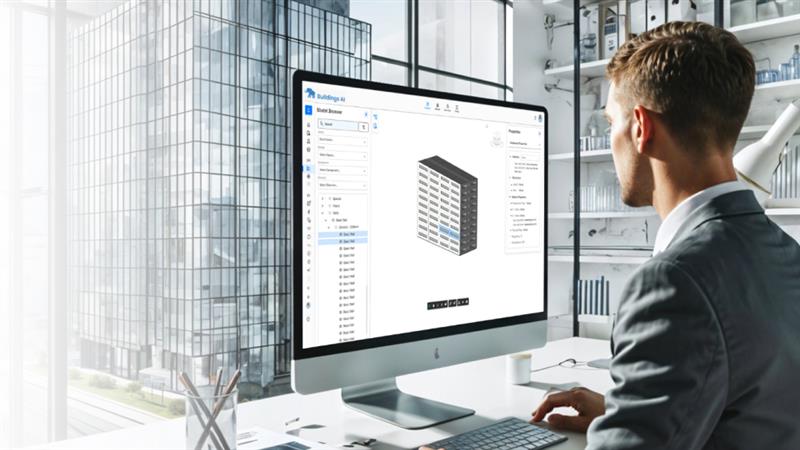Written by Sneha Shetty
Tuesday, June 09, 2020
Evaluate pedestrian wind comfort using globally recognized comfort criteria
By
Sneha Shetty


Pune, India - This is a press release article about how simulationHub's pedestrian comfort app helps in analyzing the pedestrian
wind comfort using globally recognized standard comfort criteria.
Pedestrian Wind Comfort
The advent of high rise buildings in windy areas has led to a rise in concerns regarding the safety and comfort of pedestrians in their
vicinity. The microclimate of any surrounding is affected by such high rise buildings. This, when paired up with gusty winds, creates
unfavorable circumstances that affect the comfort and safety of the pedestrians. The study of the comfort of pedestrians in such conditions
is called pedestrian wind comfort. It consists of combining statistical meteorological data with building aerodynamic information and comfort criteria.

(Source : www.novinite.com)
Why is pedestrian wind comfort important?
Wind comfort and safety in pedestrian areas has become one of the important safety parameters when designing new cities. This is one of the
major microclimatic issues to be considered in modern city planning and building design. Pedestrian wind comfort and safety studies are conducted
to predict, assess and mitigate the impact of the site and building designs on pedestrian level wind conditions. Hence, architects and town planners
need guidelines and simplified design tools to take account of the wind in their projects. These building induced aerodynamics effects (i.e. the wind
flow conditions around the buildings at the site location) can be obtained by either wind tunnel modeling or Computational Fluid Dynamics (CFD) simulations.
What is wind comfort criteria?
Comfort Criteria is a standard by which pedestrian comfort is defined. Many criteria are globally accepted. They are based on the maximum allowed exceedance of
a speed threshold.
The criteria set the threshold wind speed and then say how much wind speeds can go beyond that threshold. Most of the comfort criteria like Lawson, CSBT, BLWTL
and NEN 8100 are specified for the set of pedestrian activities like sitting, standing, leisurely walking, fast walking and uncomfortable. Let's understand more
about this by taking each example of Lawson and NEN1800 criteria.
Lawson Criteria
Lawson's Criteria provides wind speed and frequency ranges for pedestrian comfort and safety. Lawson's criteria is considered to be an effective criterion. It
has been widely accepted and adopted for the investigations of the wind environment associated with buildings in the UK.
Let's see the flow simulation and understand the pedestrian experience around the 'Taplow Pharmacy in Aylesbury London' as people walk along the street.

Lawson comfort criteria is selected in PCA to evaluate comfort conditions
NEN1800
It is a dutch wind nuisance standard (NEN 8100), and it applies a discomfort threshold for the hourly mean wind speed of 5 m/s for all types of activities.
Now by applying NEN1800 wind criteria let's understand the pedestrian comfort around The First Baptist Church, Vancouver

NEN8100 comfort criteria is selected in PCA app to evaluate comfort conditions
simulationHub's Pedestrian Comfort Analysis app
simulationHub's Pedestrian Comfort Analysis is used to evaluate pedestrian comfort & safety in an urban environment. It is a must-have
app for architects, environmental engineers & urban planners. It is a cloud-based CFD simulation software which aids architects to study
the effect of building on the wind distribution. It is used to analyze the wind flow pattern and the resulting pedestrian comfort levels
around the high-rise areas. PCA has 4 different wind engineering standard comfort criteria- Lawson, CSBT, BLWTL(Boundary layer wind tunnel
laboratory) and NEN 8100 Nederlandse norm (Dutch Standard)
To simulate in PCA only 4 inputs are required from the user. These are the building mass model, the site location, number of wind directions
to simulate and comfort criteria. All the other inputs related to CFD are automatically generated by the app. Once the setup is submitted,
the app runs the CFD simulations and generates the PDF report within a few hours. The report includes all setup information, comfort plot
indicating different comfort conditions and more detailed CFD results.
This lifts the main barrier for architects to use CFD on their own. Conventional CFD software has some challenges for the architect to use
this technology in evaluating their building design. This software requires the architects to have in-depth knowledge of CFD, the computational
power required for the solutions and typically take days to complete. With PCA architects can use CFD only as a tool and nothing more!
View case studies of how simulationHub apps are used for product design and optimization.
View Gallery Project
Comments
Recent posts


